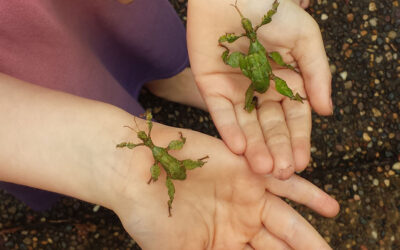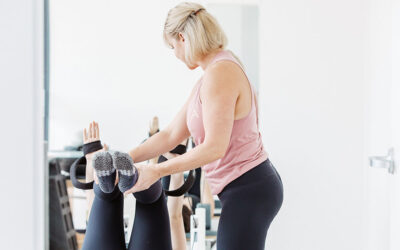Whether it’s the backyard pool or salty days at the beach, aquatic activities are a huge part of family life in Queensland. And as we head into spring, families across the region are dusting off their togs ready to dive in once more. However, a critical part of enjoying life by the water is water safety and teaching our kids to swim.
The Royal Life Saving Drowning Report of 2017 (royallifesaving.com.au) found that 291 people drowned in Australian waterways from 1 July 2016 to 30 June 2017, and a further 685 non-fatal drowning incidents occurred that resulted in hospitalisation.
Sadly, 29 of those drowning deaths were children under five years old, and 12 were children ages 5–14.
One of the best ways you can protect your child from drowning is learning to swim and water safety education. Cameron Speechley, General Manager of Rackley Swimming says, “If you can increase your child’s aquatic skills and teach them to swim, you are giving them every opportunity to recognise potential problems but also get themselves out of potential problems.”
The essentials of learning to swim
The process of learning to swim can start from a baby’s very first bath. “Introduce your baby to water from birth,” Cameron recommends. “The bath helps them to become accustomed to the feeling of water. Don’t be scared to get water on their face, as this leads to them becoming more comfortable in the water and then onto breath control.”
Swimming lessons can start from two months old, with simple splash and play sessions. “These group sessions are a great way to introduce your child to being in the water whilst also being safe in a parent’s arms.”
The next stage is about recovery, balance and buoyancy, where children hold onto the side and begin to learn about water safety elements such as a safe entry into the water, turning around and getting back to the side and climbing out. “They will also do things such as ‘monkey walking’ around the edge of the pool, so they learn how to safely get from one end to the other.”
Once these skills are mastered, children move onto propulsion and movement, where they learn to work through different depths and plains.
Once that is achieved, it’s onto more formal strokes, treading water and building up endurance.
All kids learn at different rates, so don’t compare a child to others of the same peer group.
“A lot of water confidence and how quickly a child learns to swim depends on how much exposure the parents give the child to various aquatic environments,” says Cameron. “Do they take the kids to the beach, do they go in cold water, do they go into an uncontrolled environment. All thesefactors will mean different outcomes.”
Royal Lifesaving Australia recommends that children should be able to swim 400 metres continuously before ceasing swimming lessons, and Cameron believes that this should be the minimum. “We recommend a child continues in swimming lessons until they can swim 1km, as this gives them the endurance they need to cope with a rip,” he says. “And even then, they should keep their swimming up on an ongoing basis. Swimming is more than a pastime, it’s one of the few children’s activities that will save their life.”
Water safety
As well as the mechanics of learning to swim, a large part of water safety is educating kids to be safety aware in and around water. “Our learn to swim program focuses heavily on educating the kids – such as teaching them not to go swimming without a parent and not without your togs on,” Cameron explains. “And parents also have an active role to play in this, ensuring they continue to teach this at home.”
This is followed up with basic reach and throw rescues, and the messaging of always ‘Yell and Tell’, rather than jumping in the water to help someone.
“The older the kids get, the more important this water safety messaging is. They start to head into more dangerous situations so they need to know how to keep themselves safe,” says Cameron.
For parents, supervision is the most essential part of water safety. “If a young child is in the pool, then you must be in the pool with them,” says Cameron. “Even once children are older, they should still always be actively supervised when in the water.”
For a group of children, such as a pool party, Royal Lifesaving states that one of the smartest ways to supervise children is to have a designated supervisor. They suggest the supervisor should wear a ‘Designated Child Supervisor’ Hat and if that supervisor leaves they should hand the hat (responsibility) over to another adult to take over.
Getting the most out of your swimming lessons
Swimming lessons can be a wonderful opportunity for quality time with your child, so try to give it the time it deserves. Rather than rushing to lessons, Cameron recommends allowing plenty of time so the child has time to settle into the environment.
“When parents arrive rushed and stressed, the child also feels stressed and goes into the lesson feeling anxious.”
Once the lesson is over, stay for some free play in the wading pool afterwards. “This is great for kids who are apprehensive,” Cameron says. “Kids will learn for themselves, if they are allowed to explore and play.”
For cautious children, Cameron recommends increasing the frequency of lessons. “There is a great advantage to doing two lessons a week. We tracked two groups through the school – students who attended twice a week and those who came once a week – and those who attended more frequently learned 3–4 times faster.”
Pool supervision guidelines
0-5 years: Supervising adult should be within arm’s reach at all times
6-10 years: Constant active supervision required, be prepared to enter the water
11-16 years: Discourage risk-taking behaviour around water, teenagers to learn survival and rescue skills
*Courtesy of Royal Lifesaving Australia’s Keep Watch Program royallifesaving.com.au


